
Secrets of the Arctic: Discover the Fascinating World of Polar Bears
Meet the Polar Bear
Step into the icy wilderness of the Arctic, where one of the most fascinating creatures on Earth reigns supreme: the polar bear. From their translucent fur to their unparalleled hunting skills, these Arctic giants are a perfect blend of beauty and power. In this blog, we’ll uncover the secrets of polar bears, exploring their unique adaptations, family life, and critical role in the fragile Arctic ecosystem. Plus, we’ll compare them to their closest relatives and learn why they’re truly one of a kind.

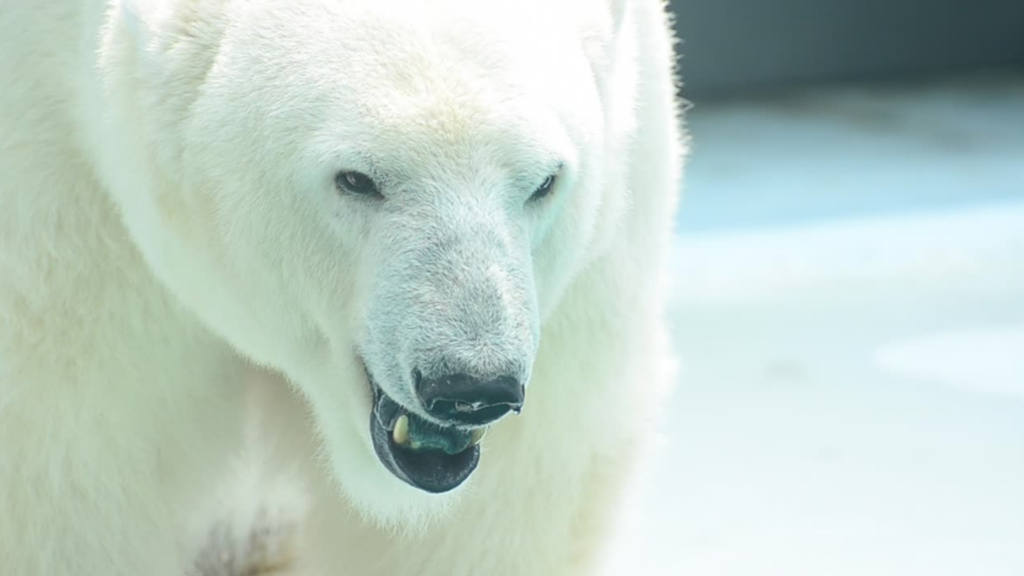
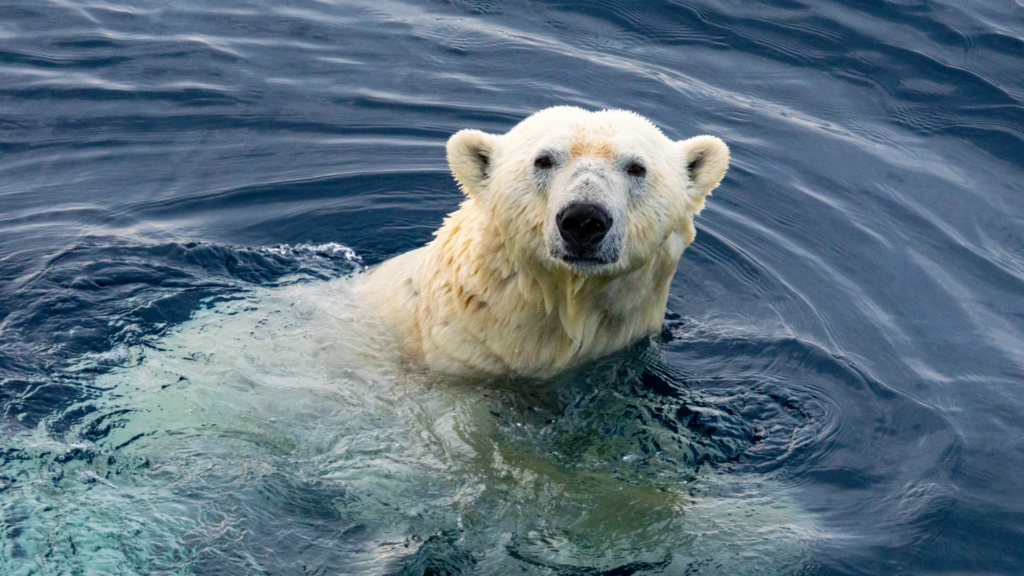
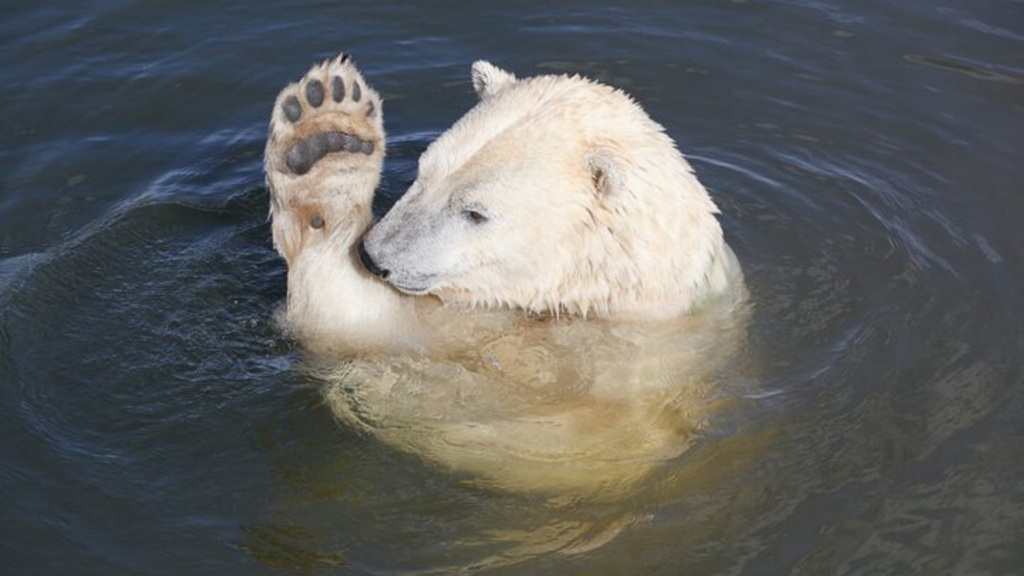
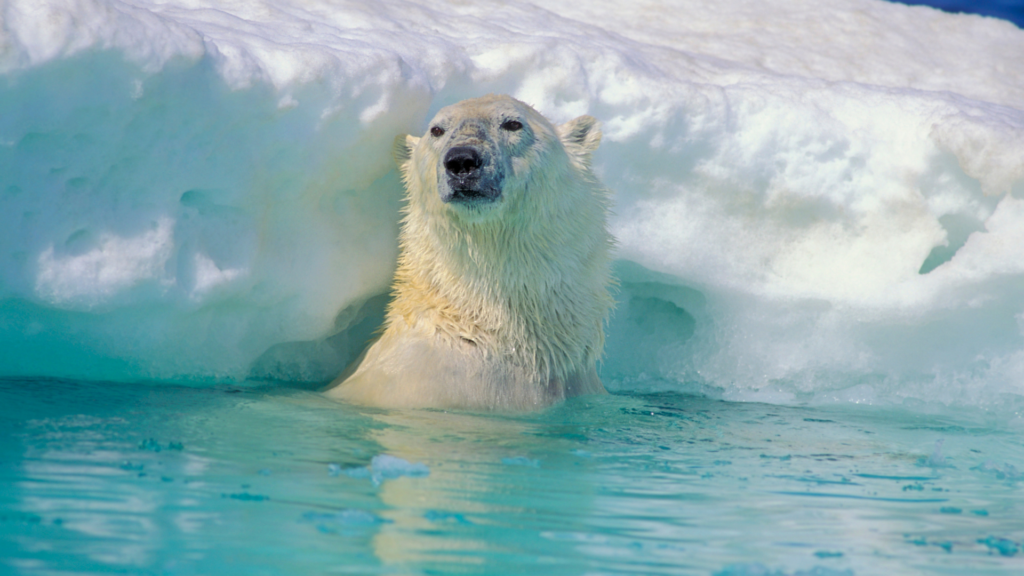
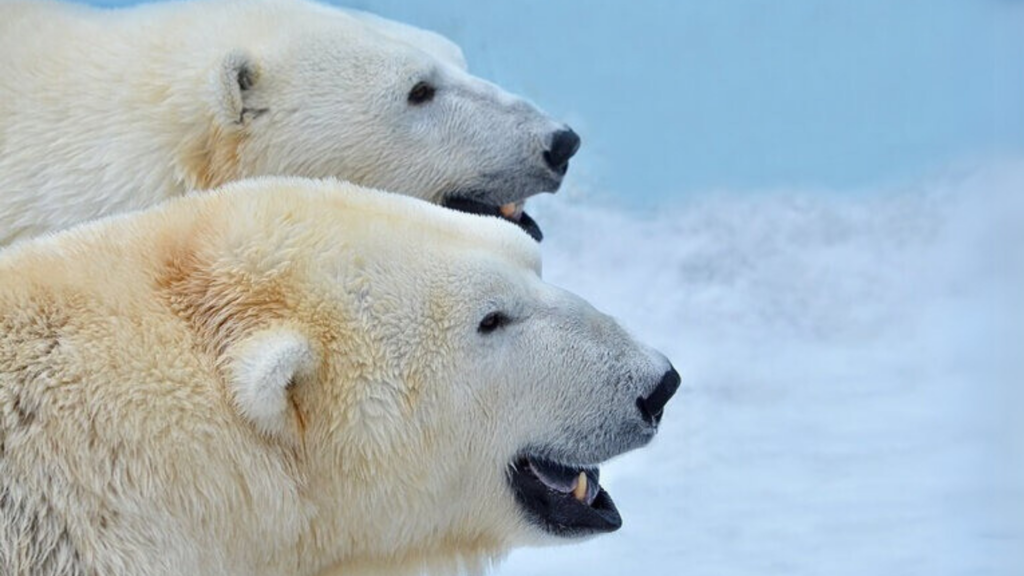
What Makes Polar Bears Unique?
Polar bears (Ursus maritimus) are often called the “Kings of the Arctic,” and for good reason:
- Translucent Fur and Black Skin: Their translucent fur reflects light, giving them their iconic white appearance. Beneath the fur, their black skin absorbs heat, a clever adaptation for life in freezing temperatures.
- Marine Mammals: Unlike most land mammals, polar bears are classified as marine mammals. They spend much of their time on sea ice, hunting seals and gliding across the frozen Arctic landscape.
- Built for Stealth: Their silent, deliberate movements allow them to sneak up on prey in the vast Arctic expanse, where survival depends on efficiency and precision.
Diet and Hunting Habits
Polar bears are apex predators and rely heavily on seals for sustenance:
- Seal Specialists: They primarily hunt ringed and bearded seals, using sea ice as a platform. Their sharp sense of smell can detect seals under several feet of snow.
- Adaptability: While seals are their main prey, polar bears are opportunistic eaters. In tough times, they’ll scavenge carcasses, eat bird eggs, or forage for berries and seaweed.
- Survival Mode: When food is scarce, polar bears can slow their metabolism, allowing them to survive for months without a substantial meal.
Life in the Arctic
Polar bears are perfectly equipped to endure the Arctic’s harsh conditions:
- Extreme Insulation: Their fur, combined with a fat layer up to 4 inches thick, keeps them warm even in temperatures as low as -50°F.
- Snowshoe-Like Paws: Their large paws, up to 12 inches wide, distribute their weight, preventing them from sinking into snow and thin ice.
- Swimming Champions: As sea ice continues to melt, polar bears must swim longer distances. They’ve been recorded swimming over 60 miles without rest, an essential adaptation for survival.
Family Life and Cubs
Polar bears have a fascinating reproductive cycle and family dynamic:
- Tiny Beginnings: Cubs are born weighing just about 1 pound, entirely dependent on their mother for survival. They nurse on rich milk that helps them grow rapidly in their first few months.
- Protective Mothers: Female polar bears are fiercely protective, digging snow dens to shelter their cubs from the Arctic’s brutal winter.
- Siblings for Life: Most polar bear litters consist of twins, and siblings stay together with their mother for about two years, learning vital survival skills.
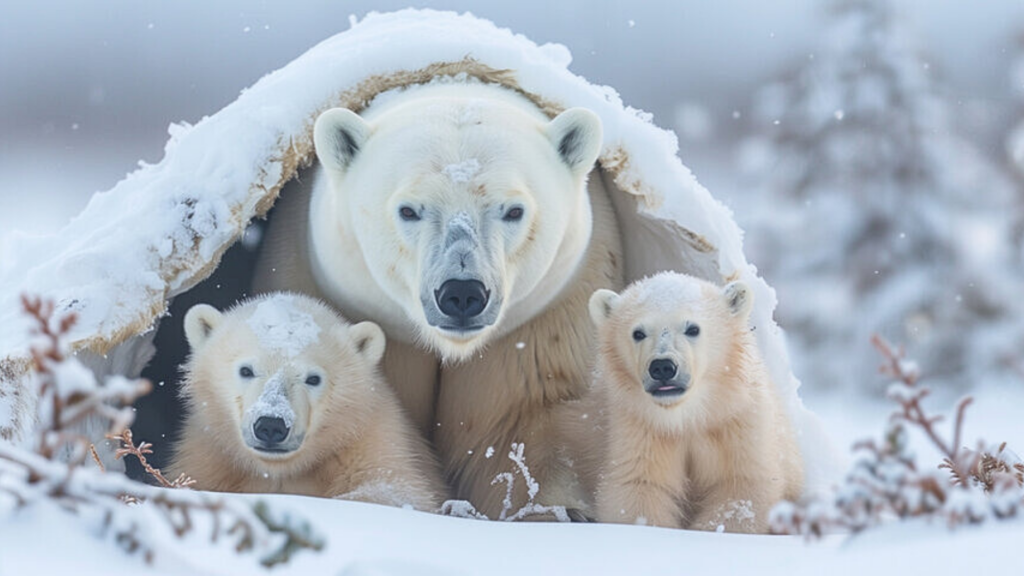
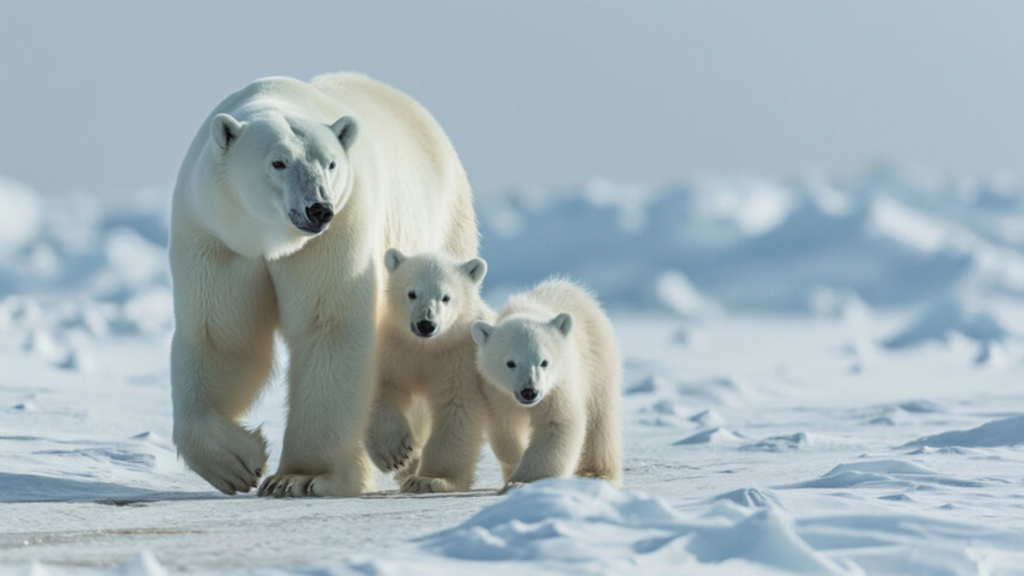


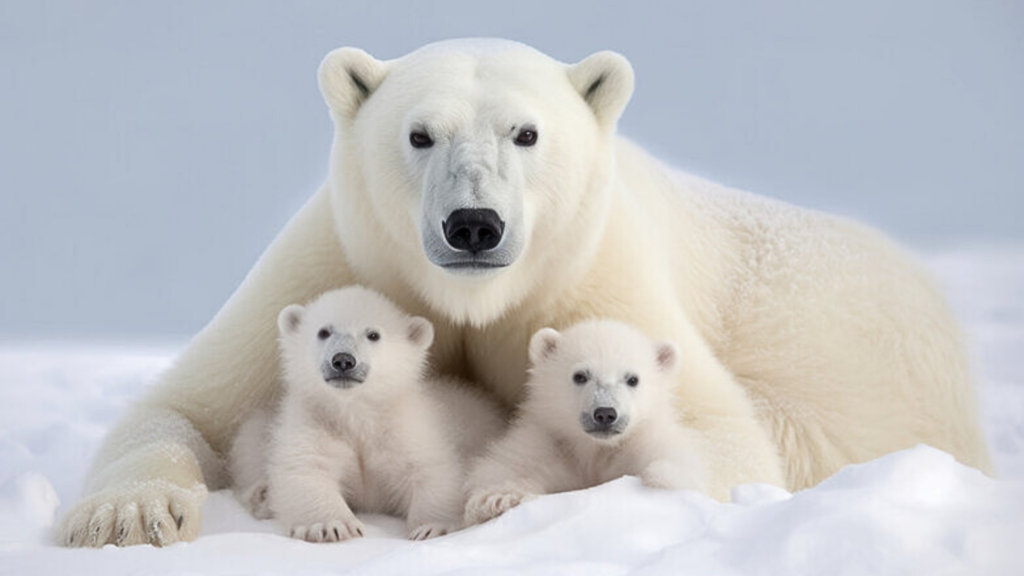
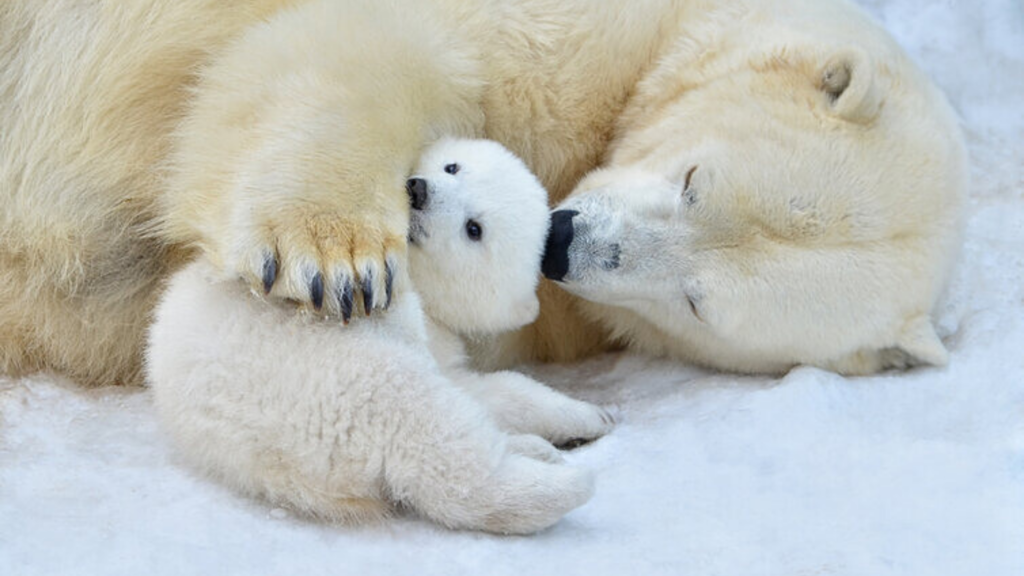
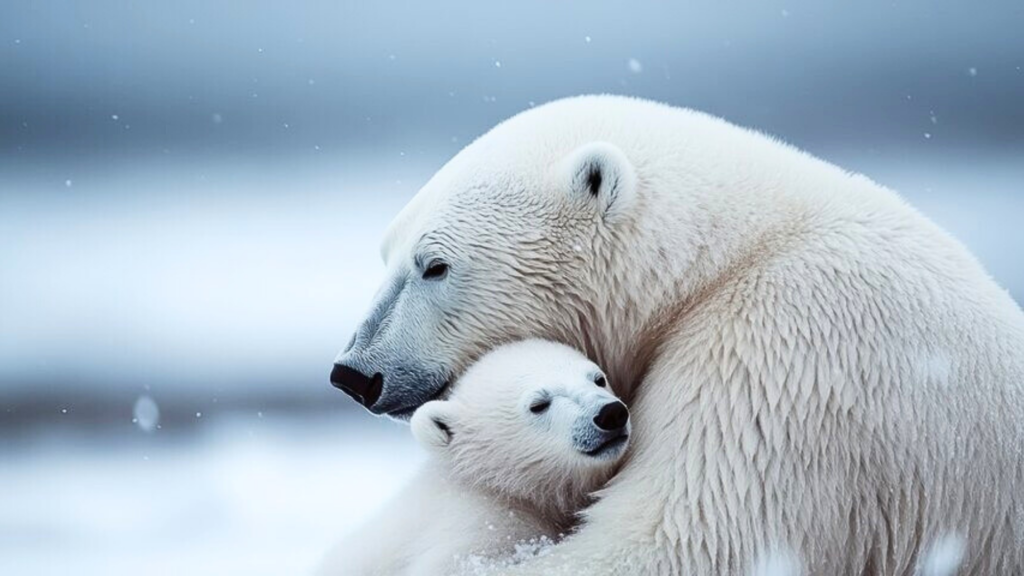
Relatives and Comparisons
While polar bears are unique, they share a close lineage with other bears:
- Grizzly Bears: Polar bears and grizzlies (Ursus arctos horribilis) share a common ancestor. In fact, grizzly-polar bear hybrids, called “pizzlies” or “grolar bears,” have been observed in the wild where their ranges overlap.
- Brown Bears: Brown bears are the closest relatives of polar bears. Compared to the Arctic specialists, brown bears thrive in diverse habitats, from forests to mountains.
- Black Bears: Black bears (Ursus americanus) are smaller and more widespread but share some behavioral traits, such as opportunistic feeding.
Conservation and Importance
Polar bears are more than just an Arctic icon—they’re a critical part of the ecosystem:
- Apex Predators: By regulating seal populations, polar bears help maintain the balance of the Arctic marine environment.
- Indicators of Climate Health: As polar bears struggle with shrinking sea ice, they signal broader environmental challenges related to climate change.
- Efforts to Protect Them: Organizations like WWF and Polar Bears International are working to raise awareness, conduct research, and mitigate climate impacts to ensure these magnificent creatures have a future.
Fun Facts About Polar Bears
Here are some quirky and lesser-known facts to amaze your readers:
- Thermal Stealth: Polar bears’ thick fur and fat make them nearly invisible to infrared cameras. Only their nose and breath show up on thermal imaging.
- Silent Swimmers: They can paddle at a steady 6 miles per hour, often covering distances that would leave most animals exhausted.
- Built for Traction: Tiny bumps on their paw pads, called papillae, provide grip on slippery ice, acting like built-in anti-slip shoes.
About Polar Bears
Characteristics/Behaviors: Carnivorous, solitary, excellent swimmers, apex predators
Habitat: Arctic sea ice, coastal regions, and tundra areas surrounding the Arctic Ocean
Animal Classification: Mammals
Species Family: Ursidae (bears)
Region: Canada, Alaska, Greenland, Norway, Russia
Conservation Status: Vulnerable (declining population)
Conclusion
Polar bears are extraordinary creatures uniquely adapted to life in one of the harshest environments on Earth. As icons of the Arctic, they symbolize strength, resilience, and the fragility of our planet’s ecosystems. Protecting these magnificent animals ensures the preservation of their icy habitat and the biodiversity it supports.



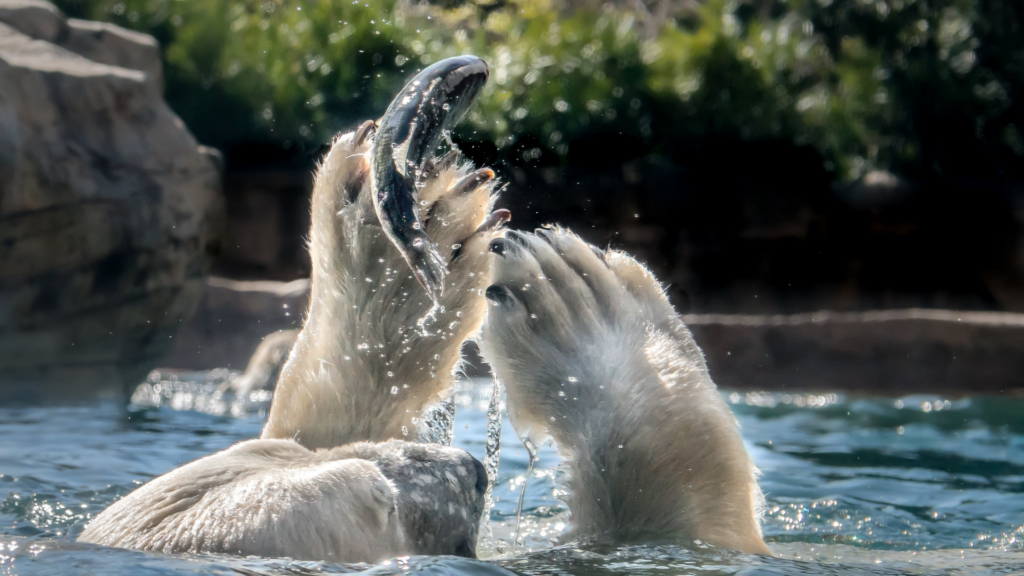

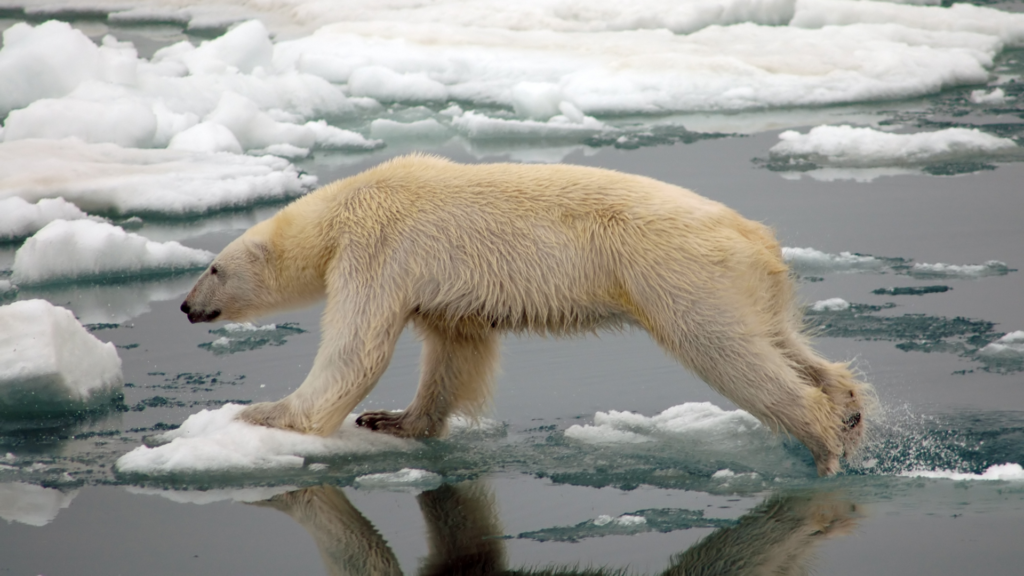
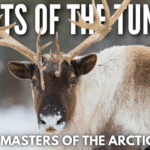




Leave a Reply